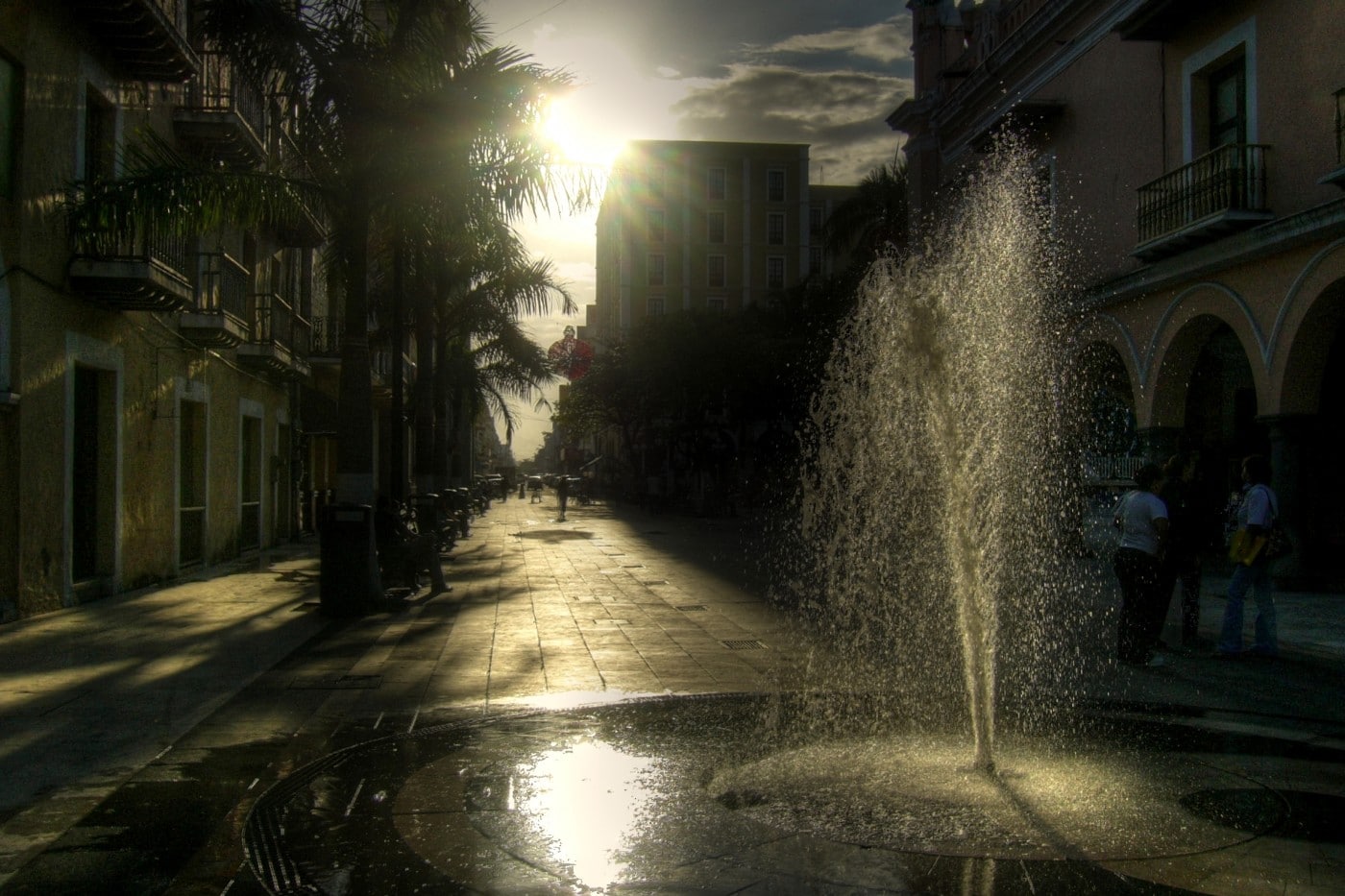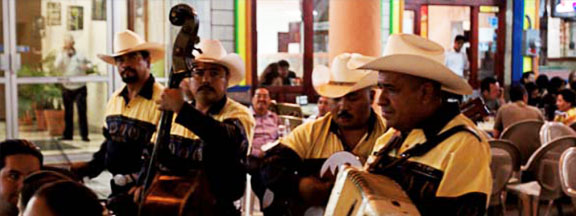
Photos by Eric Mohl
PORT AUTHORITY
Puerto Veracruz in southern Mexico has survived Spanish conquistadors, a little-known US invasion and plays host to what many consider to be the second largest Carnaval celebration in the world, hot on the heels of the epic festivities in Rio de Janeiro. Spend a few days here and this port city reveals even more surprises.
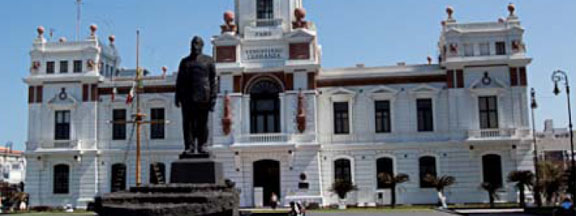
Street Seen
Right off the bat, Puerto Veracruz (simply called Veracruz) looks, feels, sounds and tastes more Caribbean than almost anywhere else in Mexico. The music makes you want to swing your hips, not just stomp your feet. The clothes are a little tighter. Refried beans are suddenly replaced with stewed black beans and a fiery new selection of salsas. Locals, not just the occasional backpacker, sport dreadlocks. You’re as likely to see a gaggle of women sipping tequila on a sunny afternoon as you are men and everyone is lightening fast with a smile.
A smile (sonrisa in Spanish) is actually the official symbol of the state of Veracruz which calls itself “the smiling state.” To drive that point home, Veracruz State has co-opted the ancient Totonac symbol of an almost triangular androgynous face wearing a perpetual (and infectious) grin. It’s one of the few ancient Mexican icons depicted with a smile on its face.
An artist who signs his work as “F. Gali” is clearly inspired by the sonrisa. His vibrant spray paint murals on walls and buildings throughout Veracruz are cheerful celebrations of the Veracruzano smile and you’ll smile too as you stroll past them.
Veracruz is full of old buildings, many of them in various stages of repair or awaiting their lucky day. The structures which have been rehabilitated feature festive colors and wrought iron porch details that bring to mind New Orleans.
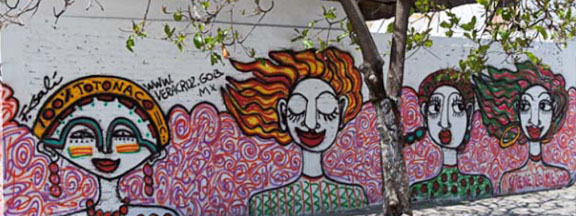
Hernán Cortés Slept Here
This is, of course, not what infamous conquistador Hernán Cortés found when he landed in Veracruz (which means true cross in Spanish) in the early 1500’s. He used the swampy, mosquito-infested spot as a base from which he went about his ruthless conquistador business, primarily looking for gold and “saving” souls. Cortés established settlements in two other nearby locations (Villa Rica de la Vera Cruz and La Antigua) before the Spanish eventually returned to settle Veracruz in the late 1500’s.
Despite his notorious brutality, you can still find Cortés’ name and image around modern day Veracruz, including on the sign for a store that sells uniforms to members of Mexico’s navy.
Cortés wasn’t the only invader to land in the port of Veracruz. It’s a moment in history that’s not part of most history classes, however, the United States invaded the city of Veracruz in 1914 on the orders of President Woodrow Wilson. Wilson felt slighted because the Mexican government, still dealing with the upheaval of the Mexican Revolution, failed to apologize for the Tampico Affair so he occupied Veracruz. Fighting went on for six months and 100 Mexicans were killed. Then WWI broke out and other battles demanded the U.S. President’s attention and troops.
Water Ways
The defining geographic element of Veracruz remains its busy port which serves as a major shipping hub and a base for Mexico’s Navy. Veracruz’s water-front location doesn’t come with pristine beaches but city planners have made the most of the waterfront they’ve got.
A lovely waterfront promenade (malecón in Spanish) goes for miles and features an enormous vibrantly painted statue of a dog. This is Xico, called the mascot of Mexico by its creator, artist Cristina Pineda, and produced in hundreds of sizes and designs. Xico references both an ancient breed of hairless dog indigenous to Mexico and the origins of the word Mexico. Xico statues have also been installed in the towns of San Luis Potosí, Mexico; La Habana, Cuba; and Santiago de Chile, Chile, as well as in New York City, Brussels and Shanghai.
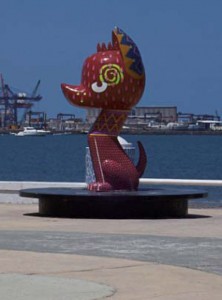
Veracruz’s tidy aquarium (the Acuario de Veracruz) is also located on the malecón. The aquarium offers the usual suspects: turtles, reef fish, dolphins, jellyfish. But it also offers something unique in all of Mexico: the chance to get into an aquarium tank with a bunch of brown sharks (friendly) and tiger sharks (known to be aggressive) during feeding time.
Sign up for the aquarium’s Tiburonario (300 pesos for adults, about $23 US, including the price of general admission) and you get to borrow a wet suit, mask and snorkel, and then climb into a clear acrylic cage with holes in it along with an aquarium employee. The cage is then lowered into a tank exhibit full of sharks until you’re up to your waist in water–and in sharks.
Being submerged in a closed box under the water without full Scuba gear on is even more disconcerting than being circled by hungry sharks. It’s also a little weird to be watched by the rest of the aquarium patrons who can clearly see you from their side of the glass tank wall as you feed the sharks hunks of fish on the ends of sharpened acrylic feeding poles.
Not surprisingly, the port city of Veracruz has a lot of shipwrecks off its shores and Scuba divers can explore many of them. Researchers, archaeologists and regular divers are still finding treasures down there.
After Dark
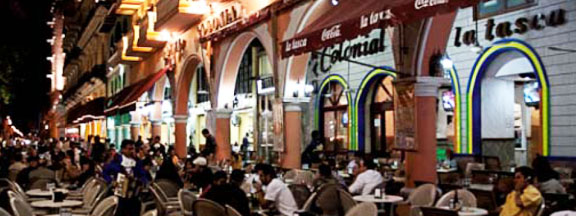
In Veracruz, streets that seemed tranquil, even deserted, during the day come to life after the sun goes down. Vendors sell snacks and play their radios, free concerts in the main plaza (zócalo in Spanish) get under way and a slew of restaurants and bars set up shop on the broad sidewalks along the perimeter of the zócalo itself.
At night the zócalo becomes a hub of eating, drinking and dancing as roving salsa and mariachi bands wander between tables and gather crowds under the trees. Stand too close for too long and you just might get pulled into the fray as someone’s new dance partner!
Consider it a warm-up for your return visit during the city’s famed Carnaval celebration every February.
[alert type=white]
The international area code for Mexico is 52.
WHERE TO SLEEP:
Gran Hotel Diligencias – Originally a station for stagecoaches delivering mail (diligencias in Spanish), the proprietors added a few humble rooms in 1795. Today this well-kept, high-end grand dame, right on the zocolo, has more than 120 rooms and an inviting pool deck. 1115 Independencia, 932 2008, http://www.granhoteldiligencias.com.
Balaju Hotel & Suites – Opened in 2009, this minimalist newcomer right on the malecon has a small infinity edge pool plus 107 rooms and two corner suites which are enormous and include a full kitchen and water views. 1317 Manuel Avila Camacho Boulevard, 229-201-0808,http://www.balaju.com/.
Hotel Emporio – One of the largest and most iconic hotels in Veracruz re-opened its doors on July 12, 2010 after a top to bottom renovation. This is the place to stay during Carnaval since many rooms have a direct view over the parade route. Xicoténcatl Faros, 866-936-7674,http://www.emporiohotels.com/veracruz_eng.
Hotel Playa – This newly-renovated 33-room hotel is the most stylish economical option on themalecon. Rates start at 200 pesos (around $15US) for most of the year and increase to 400 pesos and up (about $30US and up) during Carnaval, including views of the festivities as the parade passes by. 28 Valencia at Manuel Ávila Camacho Boulevard, 937 2510,http://www.hotelplayaveracruz.com.mx/english/default.asp
WHERE TO EAT AND DRINK:
Restaurants on the zócalo – The half dozen restaurants that line this central plaza buzz at night. Mediocre food is made up for by roaming troubadours and great people watching. Be warned: some restaurants on the zócalo don’t include tax in menu prices which makes everything you order more expensive than expected.
Gran Cafe de la Parroquia – Veracruz city is close to the state’s coffee-growing region of Coatepec and this bustling, cavernous coffee shop (it takes up nearly a whole block) works the caffeinated vibe with Mex Decco décor, gorgeous tile work and a fascinating cross-section of regulars. Order a doble—at 24 pesos, around $2US, it’s just two pesos more than a single. If you want milk, gently bang your spoon on your cup and a waiter will come over with a massive tea kettle of warm milk. You can also buy ground coffee or whole beans here (85 pesos, about $6.50US, per pound) to take home with you. 34 Valentin Gómez Farias, 229 32 25 84, http://www.laparroquia.com/.
La Suriana 2 – Enjoy well-prepared and inexpensive fresh seafood dishes—including the Spanish-influenced Veracruzano style—at this unassuming restaurant a few blocks off the zócalo. They usually close around 7 pm. 286 Avenida Zaragoza, 931 7099.
Café 49L – Gregarious owner Alberto Herrera Alvarez will rev you up with samples of freshly brewed coffee at his stall in the Mercado Hidalgo and even let you taste his delicious coffee marshmallows before you buy a bag (43 pesos—about $3.50 US—for just under a pound). These elegantly shaped half coffee half vanilla beauties, which are made with the superb coffee grown in nearby Coatapec, make perfect sight-seeing snacks or the secret ingredient in decidedly grown-up s’mores back at home.
Antojitos Lolilta – This clean and airy restaurant is a breakfast mecca. The extensive menu includes picadas—a local favorite that involves filling a plate-size fried tortilla base with slightly raised edges with a mind-boggling array of ingredients. Come hungry. 837 16 de Septiembre between Escobedo and Emiliano Zapata, 932-0760.
MUST SEE AND DO:
Tiburonario at the Acuario de Veracruz –Manuel Avila Camacho Boulevard, Playón de Hornos, 229-931-4376, http://www.acuariodeveracruz.com/.
Tridente Diving – Owner Gonzalo Estrada has been SCUBA diving in the waters off Veracruz for more than 50 years and has even made some museum-worthy discoveries in the many wrecks off the coast. 353 Manuel Avila Camacho Boulevard, 229-260-5272.
El Habano Tabaquería – This shop, in a tiny yellow building on a corner in a residential neighborhood, sells hand-rolled Aroma de San Andreas Robusto cigars made in Mexico with flavorful tobacco grown in Veracruz state (889 pesos, about $70US, for 25 cigars in a lovely wooden box or 50 pesos, about $4US, individually). Even if you aren’t into cigars, this old-school shop is a must-see. 1317 1 de Mayo Local C at the corner of Alacio Perez, 229 931 0816.
[/alert]

